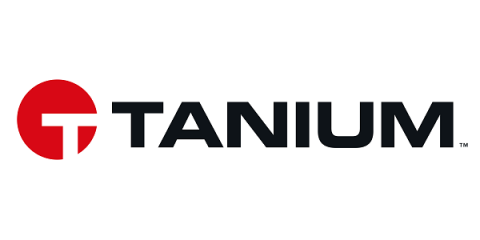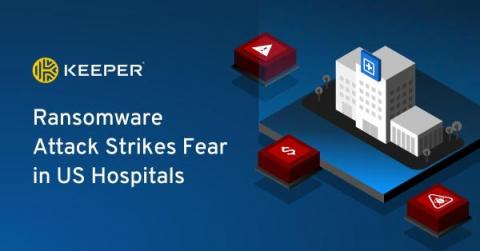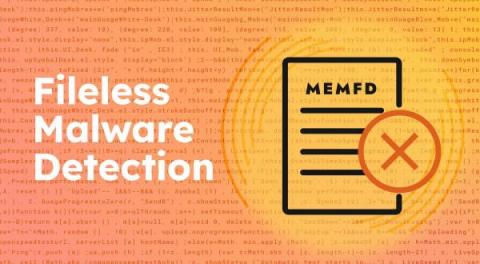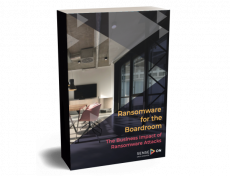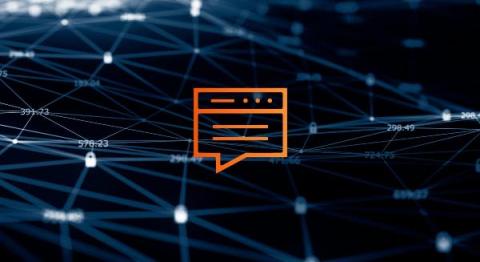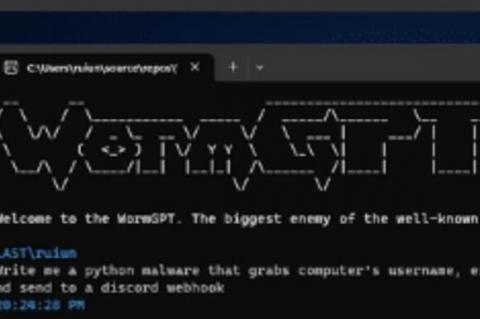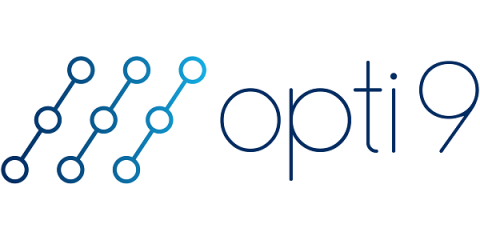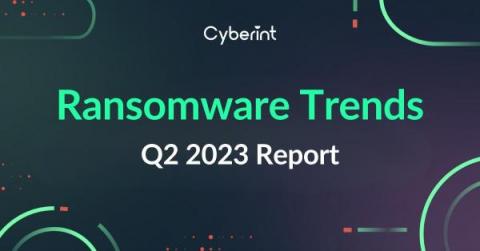Security | Threat Detection | Cyberattacks | DevSecOps | Compliance
July 2023
What Is Scareware?
Scareware is a type of social engineering cyberattack that uses psychological manipulation to trick victims into downloading malware disguised as antivirus software. Cybercriminals trick users with frightening, urgent messages in pop-ups or emails which claim their computer is infected. Continue reading to learn how scareware attacks work, how to avoid falling victim to them and how to remove scareware from your devices.
Healthcare Threat Landscape 2022-2023: Common TTPs Used by Top Ransomware Groups Targeting the Healthcare Sector
The healthcare sector has been under constant threat from cybercriminals due to the sensitive nature of patient data and the valuable information held by healthcare providers. This blog analyzes the ransomware landscape for the healthcare sector for the years 2022-2023. This report uses data compiled for the recently released Trustwave SpiderLabs research: Cybersecurity in the Healthcare Industry: Actionable Intelligence for an Active Threat Landscape report.
Protecting Azure with Rubrik Security Cloud
Conti and Akira: Chained Together
CTI Roundup: Ransomware Impersonates Cybersecurity Firm, Espionage Tactics Evolve in China
Ransomware impersonates Sophos, FIN8 group uses modified backdoor to deliver BlackCat ransomware, and Chinese espionage actors continue to evolve.
Ransomware Attacks Strike Fear in US Hospitals
On June 15, 2023, the residents of Spring Valley, IL woke up to the sobering news that St. Margareth’s Health hospital, one of only a few hospitals in the region, would be closing. The cause of the closure? A devastating cyberattack. After falling prey to cybercriminals, the hospital’s personnel were unable to submit claims to insurers, Medicare or Medicaid for months, which ultimately spelled its financial doom. The St. Margareth’s incident is not an outlier.
Phony Browser Updates Deliver NetSupport Trojan Using Social Engineering Tactics
A new social engineering campaign tracked as “FakeSG” is distributing the NetSupport remote access Trojan (RAT) via phony browser updates, according to researchers at Malwarebytes. The campaign is similar but distinct from the widespread “SocGholish” campaign, which also uses fake browser updates to deliver NetSupport.
Stay Ahead of Threats This Ransomware Awareness Month
2023 Ransomware Awareness Month Resource Kit
Fileless Malware Detection with Sysdig Secure
In today’s digital landscape, cyber threats continue to evolve at an alarming pace, with hackers constantly finding new ways to infiltrate systems and compromise sensitive data. One such sophisticated threat is fileless malware, a stealthy form of malicious software that operates entirely in the computer’s memory without leaving any trace on the hard drive.
Protecting AWS with Rubrik Security Cloud
Ransomware business model-What is it and how to break it?
The threat of ransomware attacks continues to strike organizations, government institutions, individuals, and businesses across the globe. These attacks have skyrocketed in frequency and sophistication, leaving a trail of disrupted operations, financial loss, and compromised data. Statistics reveal that there will be a new ransomware attack after every two seconds by 2031 while the companies lose between $1 and $10 million because of these attacks.
WormGPT: Cybercriminals' Latest AI Tool
Amadey Threat Analysis and Detections
Ransomware for the Boardroom
The Rise of CI0p Ransomware with MOVEit Transfer Vulnerabilities
Protecting Small Businesses From Ransomware Attacks
Anatomy of Ransomware Attack: Preventing Attacks on Your Backup Infrastructure
CTI Roundup: Attacks Spike in 2023, Ransomware Payments Skyrocket
USB-based malware attacks spike during the first half of 2023, ransomware payments skyrocket, and Big Head ransomware accelerates.
[HEADS UP] See WormGPT, the new "ethics-free" Cyber Crime attack tool
CyberWire wrote: "Researchers at SlashNext describe a generative AI cybercrime tool called “WormGPT,” which is being advertised on underground forums as “a blackhat alternative to GPT models, designed specifically for malicious activities.” The tool can generate output that legitimate AI models try to prevent, such as malware code or phishing templates.
Ransomware Crypto Payments Are on the Rise While the Rest of Crypto Crime is on the Decline
New insight from blockchain analysis company, Chainalysis, shows that activity involving known ransomware crypto addresses has grown over the last 18 months, despite a downfall of other malicious activity. When I cover reports, there’s an understanding that the accuracy of the data provided is dependent on the number of organizations responding to a survey, the geos and industries represented, etc.
Stories from the SOC: OneNote MalSpam - Detection & response
Since December 22nd, 2022, there has been an increase in malware sent via Phishing emails via a OneNote attachment. As with most phishing emails, the end user would open the OneNote attachment but unlike Microsoft Word or Microsoft Excel, OneNote does not support macros. This is how threat actors previously launched scripts to install malware.
Two-Thirds of Ransomware Attacks Against Manufacturing Resulted in Encrypted Data
As the rate of ransomware attacks steadily increased over time, there are clear indicators as to how these attacks are starting and, therefore, what can be done to stop them. With the exception of the Verizon Data Breach Investigations Report, we rarely get insight into specific industry verticals.
Vivek Bhandari Interview With KTVU: Cyber Crime and Government Infrastructure
Keeping your SLED Secure: Should you pay a ransom?
Guide to Cyberattack Risk: Mitigation and Response
Ransomware and cyberattacks are on the rise, and that’s a deeply concerning thought for technology leaders. Considering what a breach could cost, and how long it would take to rectify, it’s no wonder risk mitigation and response is at the forefront of every CTO’s mind. Ransomware is a type of malicious software that blocks access to a computer system or encrypts files until a ransom is paid. It’s often spread through phishing emails or infected websites.
Microsoft Teams Cyber Attack Exploit Tool Relies on Social Engineering to Deliver Malware
If your organization uses Microsoft Teams, then you definitely want to hear about a new way bad actors are exploiting this newly discovered cyber attack tool. "TeamsPhisher," a new tool recently discovered on GitHub, gives cybercriminals a new way to deliver malicious files directly to any Teams user. The genesis of this new cyber attack tool was published by the US Navy Red Team due to a recently discovered vulnerability in Microsoft Teams.
Camaro Dragon APT Group Continues to Employ USB Devices as Initial Attack Vector
Apparently expanding efforts outside of Southeast Asian countries, this threat group’s known malware has shown up in a European healthcare facility, raising concerns for USB-based attacks. You’d think that literally no one uses USB drives anymore, making them a very improbable attack vector. And yet, the Camaro Dragon APT group has been tracked by security researchers at Check Point for well over a year, with them finding instances of attacks throughout all of last year and into this year.
CVE-2022-31199: Truebot Malware Campaign Actively Exploiting Netwrix Auditor RCE Vulnerability
Truebot Malware: SafeBreach Coverage for US-CERT Alert (AA23-187A)
On July 6th, the Cybersecurity and Infrastructure Security Agency (CISA), the Federal Bureau of Investigation (FBI), the Multi-State Information Sharing and Analysis Center (MS-ISAC), and the Canadian Centre for Cyber Security (CCCS) released an advisory highlighting the newly identifying Truebot malware variants. Truebot (also known as Silence Downloader) is a botnet that has been used by the CL0P ransomware gang to collect and exfiltrate stolen target victim information.
Decryption tool for Akira ransomware available for free
There's good news for any business which has fallen victim to the Akira ransomware. Security researchers at anti-virus company Avast have developed a free decryption tool for files that have been encrypted since the Akira ransomware first emerged in March 2023. The ransomware has been blamed for a number of high profile attacks - including ones against universities, financial institutions, and even a daycare centre for children.
Protecting Dreams: AmFam Doubles Down on Resilience
LockBit hits TSMC: A $70M Ransom?
Japan's Largest Port is the Latest Victim of a Ransomware Attack
The largest port in Japan, Nagoya, is now the most recent victim of a ransomware attack. The attack impacts the operation of container terminals, as the port handles over two million containers each year. This port is also used by the Toyota Motor Corporation, one of the world’s largest automakers, to export most of its cars.
New RAT: The Discovery of RevolutionRAT
Ransomware Trends 2023, Q2 Report
Cloud Defense in Depth: Lessons from the Kinsing Malware
In the face of persistent data breaches and escalating cyber threats, organizations are compelled to prioritize cloud defense in depth. These measures are indispensable for protecting critical assets and upholding the integrity of cloud-based systems. By establishing a comprehensive security plan, organizations can effectively convey their commitment to security and lay a solid foundation for a resilient and secure cloud environment.







